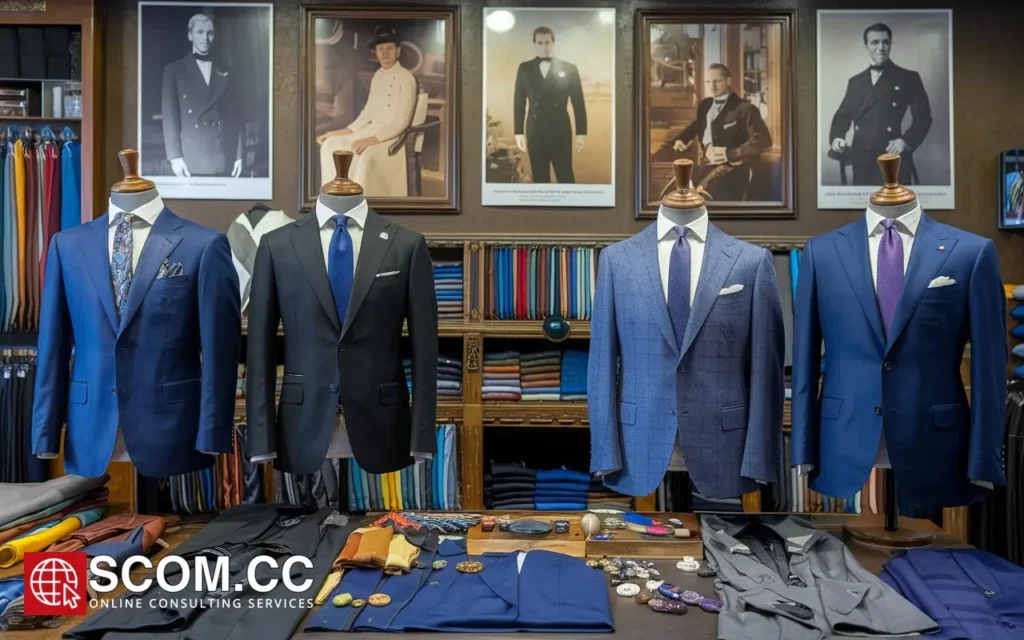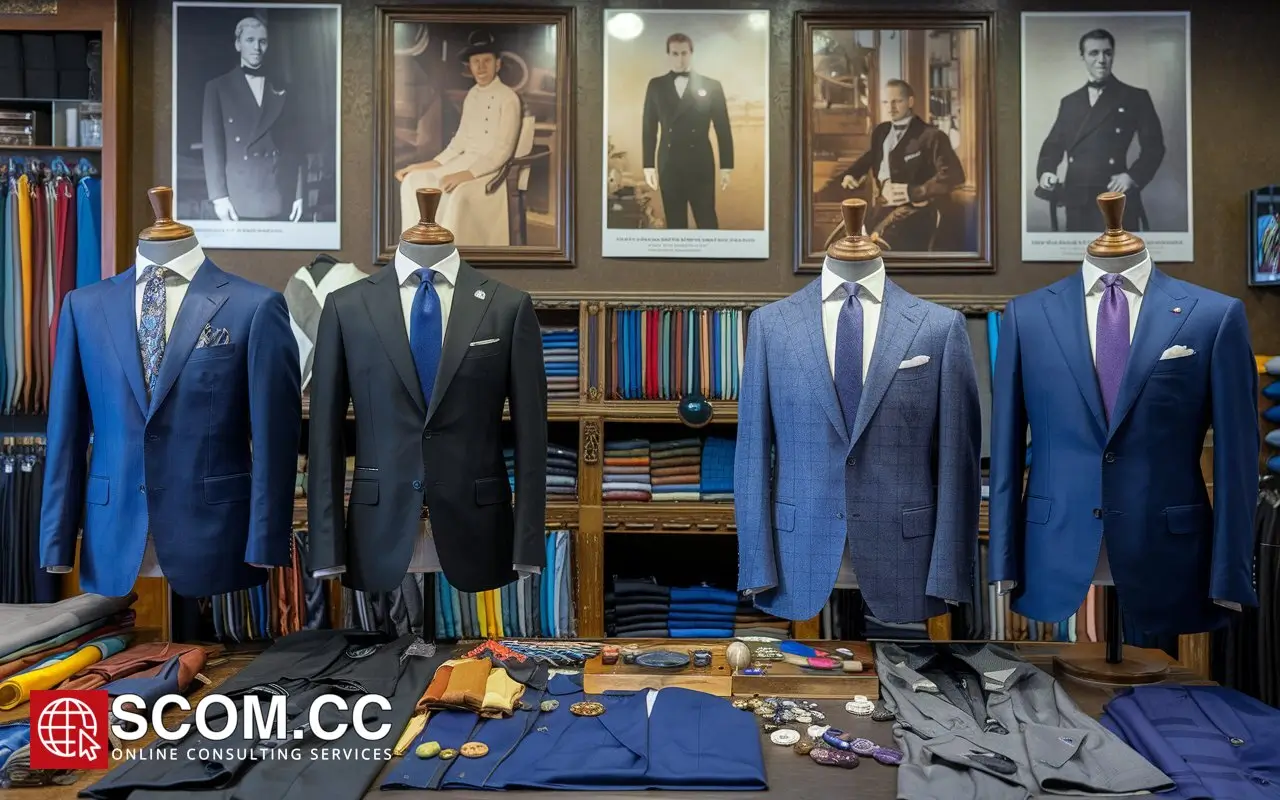What Are the Historical Roots of Modern Tailoring Fabrics?

- What Are the Historical Roots of Modern Tailoring Fabrics?
- Early Fabric Innovations: Ancient to Medieval Times
- Renaissance to 18th Century: The Rise of Luxury Fabrics
- 19th Century to Early 20th Century: The Industrial Revolution and Fabric Advances
- Late 20th Century to Present: Modern Fabric Technologies and Trends
- Conclusion: The Enduring Legacy of Tailoring Fabrics
-
FAQ
- 1. What are the main types of fabrics used in tailoring throughout history?
- 2. How did the Industrial Revolution impact tailoring fabrics?
- 3. What role did the Jacquard Loom play in the development of tailoring fabrics?
- 4. How have synthetic fibers changed the tailoring industry?
- 5. What are some examples of sustainable fabrics used in modern tailoring?
- 6. How has the focus on performance fabrics influenced contemporary tailoring?
- 7. What are some notable tailoring fabrics that have remained popular over time?
What Are the Historical Roots of Modern Tailoring Fabrics?
Introduction to Tailoring Fabrics: A Historical Perspective
The evolution of tailoring fabrics reflects a fascinating journey through history, showcasing the blend of technological advances, cultural influences, and economic factors. Understanding the historical roots of modern tailoring fabrics not only provides insight into the materials used but also highlights the innovations and traditions that have shaped contemporary fashion. This detailed exploration traces the development of tailoring fabrics from their earliest origins to the sophisticated materials used today.
Early Fabric Innovations: Ancient to Medieval Times
Ancient Textiles: The Beginnings of Fabric
The history of tailoring fabrics begins with the ancient civilizations of Egypt, Mesopotamia, and China, where the earliest textiles were crafted from natural fibers such as wool, linen, and cotton. The Egyptians were known for their linen garments, which were prized for their breathability and comfort in hot climates. Wool was commonly used in ancient Mesopotamia, where it was woven into durable and functional garments suited for various tasks.
Silk also emerged as a significant fabric during ancient times, particularly in China. The invention of sericulture allowed for the production of luxurious silk fabrics, which would later influence European tailoring as trade routes expanded.
Medieval Europe: The Advent of Wool and the Birth of Tailoring
During the medieval period, wool became the dominant fabric in Europe due to its availability and versatility. The woolen cloth was used extensively in England, where tailoring techniques began to formalize. The development of tweeds, broadcloth, and serges marked the era, reflecting the needs of different social classes and occupations.
Fustian, a blend of cotton and linen, also emerged during this period, offering a more affordable option for everyday wear. This fabric laid the groundwork for the later development of cotton blends.
Renaissance to 18th Century: The Rise of Luxury Fabrics
Renaissance Innovations: The Age of Luxury
The Renaissance period saw a flourishing of luxury fabrics due to increased trade and exploration. The introduction of velvet, brocade, and damask added opulence to the wardrobes of the wealthy. These fabrics were often adorned with intricate patterns and embellishments, reflecting the era's artistic and cultural advancements.
The Medici family in Italy and the Bourbon monarchy in France were significant patrons of textile arts, leading to the creation of elaborate and richly textured fabrics. Silk continued to be a symbol of status, and its use became more widespread across Europe.
18th Century Tailoring Fabrics: The Birth of Modern Techniques
The 18th century witnessed the refinement of tailoring fabrics with the introduction of woolen suiting fabrics like flannel and cashmere. The period also saw the rise of patterned fabrics such as tartan and houndstooth, which were popularized through Scottish and English tailoring.
Jacquard looms, invented in the early 19th century, enabled the creation of complex fabric patterns and textures, further enhancing the variety and sophistication of tailoring fabrics.
19th Century to Early 20th Century: The Industrial Revolution and Fabric Advances
Industrial Revolution: Mechanization and Mass Production
The Industrial Revolution had a transformative impact on fabric production. The invention of the spinning jenny and power loom revolutionized textile manufacturing, making it possible to produce fabrics on a larger scale. This period saw the widespread availability of wool blends, cotton fabrics, and synthetic dyes, which made high-quality tailoring fabrics more accessible to a broader audience.
Tweed and serge became popular choices for both formal and casual wear. The ability to produce consistent fabric qualities and patterns allowed for the development of ready-to-wear clothing, a significant shift from bespoke tailoring.
Early 20th Century Innovations: The Birth of Modern Fabrics
The early 20th century introduced new fabric technologies and innovations. The development of artificial fibers such as rayon and nylon marked the beginning of synthetic fabric use in tailoring. These materials provided durability and versatility, allowing for new styles and designs.
Polyester, introduced in the 1950s, became a staple in modern tailoring due to its wrinkle resistance and ease of care. This period also saw the popularization of blended fabrics, combining natural fibers with synthetics to enhance performance and reduce costs.
Late 20th Century to Present: Modern Fabric Technologies and Trends
Contemporary Fabric Innovations: The Age of Performance and Sustainability
In recent decades, tailoring fabrics have continued to evolve with advancements in textile technology. Smart fabrics, such as those with temperature regulation and moisture-wicking properties, have become prominent in both casual and formal wear. Stretch fabrics, incorporating spandex or elastane, offer enhanced comfort and mobility.
Sustainable fabrics have gained significant attention, reflecting growing environmental concerns. Materials such as organic cotton, bamboo fabric, and recycled polyester are becoming increasingly popular, aligning with the industry's shift towards eco-friendly practices.
Fashion and Fabric Trends: A Fusion of Tradition and Innovation
Today, tailoring fabrics reflect a fusion of traditional craftsmanship and modern innovation. Heritage fabrics, such as tweed and herringbone, remain popular for their classic appeal, while new materials continue to push the boundaries of fashion. Customizable fabrics and 3D printing technology are paving the way for personalized and futuristic tailoring solutions.
Conclusion: The Enduring Legacy of Tailoring Fabrics
The historical roots of modern tailoring fabrics reveal a rich tapestry of innovation, culture, and craftsmanship. From ancient textiles to contemporary performance materials, the evolution of tailoring fabrics reflects broader trends in technology, fashion, and society. As the industry continues to innovate, the legacy of historical fabrics remains a testament to the enduring art of tailoring.
Summary of Historical Roots of Modern Tailoring Fabrics
| Period | Key Developments | Significant Fabrics | Technological Innovations |
|---|---|---|---|
| Ancient Times | Early textile creation, natural fibers used | Wool, Linen, Cotton, Silk | Sericulture (Silk production) |
| Medieval Europe | Expansion of wool use, development of early tailoring techniques | Woolen Cloths, Fustian, Tweeds, Broadcloths | Manual weaving techniques |
| Renaissance | Rise of luxury fabrics due to increased trade | Velvet, Brocade, Damask | Improved dyeing techniques |
| 18th Century | Refinement of wool and patterned fabrics | Flannel, Cashmere, Tartan, Houndstooth | Jacquard Looms |
| 19th Century | Industrial Revolution impacts fabric production | Wool Blends, Cotton Fabrics, Tweeds, Serge | Spinning Jenny, Power Loom |
| Early 20th Century | Introduction of synthetic fibers and blended fabrics | Rayon, Nylon, Polyester | Artificial fibers, Blended fabrics |
| Late 20th Century to Present | Modern fabric technologies and sustainability focus | Stretch Fabrics, Smart Fabrics, Sustainable Fabrics | 3D Printing, Eco-friendly materials |
FAQ
1. What are the main types of fabrics used in tailoring throughout history?
Historically, tailoring fabrics have evolved from natural fibers like wool, linen, and cotton to include luxury materials such as silk, velvet, and brocade. With the Industrial Revolution, fabrics like tweed, serge, and synthetic fibers like rayon, nylon, and polyester became prominent.
2. How did the Industrial Revolution impact tailoring fabrics?
The Industrial Revolution introduced mechanized textile production, significantly increasing the availability and consistency of fabrics. Innovations like the spinning jenny and power loom allowed for mass production of fabrics, including wool blends, cotton fabrics, and the development of ready-to-wear clothing.
3. What role did the Jacquard Loom play in the development of tailoring fabrics?
The Jacquard Loom, invented in the early 19th century, enabled the creation of intricate fabric patterns and textures. This innovation allowed for more elaborate designs and increased variety in tailoring fabrics, influencing fashion trends and fabric production.
4. How have synthetic fibers changed the tailoring industry?
The introduction of synthetic fibers such as rayon, nylon, and polyester revolutionized the tailoring industry by providing more durable, versatile, and affordable materials. These fabrics offered new properties such as wrinkle resistance and ease of care, which influenced modern tailoring practices.
5. What are some examples of sustainable fabrics used in modern tailoring?
Modern tailoring incorporates sustainable fabrics like organic cotton, bamboo fabric, and recycled polyester. These materials reflect a growing emphasis on eco-friendly practices and environmental responsibility within the fashion industry.
6. How has the focus on performance fabrics influenced contemporary tailoring?
The focus on performance fabrics has introduced materials with properties such as temperature regulation, moisture-wicking, and stretchability into contemporary tailoring. These innovations cater to both functionality and comfort, enhancing the overall quality and appeal of tailored garments.
7. What are some notable tailoring fabrics that have remained popular over time?
Tweed, herringbone, and flannel are notable tailoring fabrics that have maintained popularity over time. These fabrics are valued for their classic appeal, durability, and versatility, continuing to be used in various tailoring applications.

To explore more about tailoring, visit our Blog of Tailoring. If you have any questions or need assistance, go to our contact page. Additionally, you can find more information about tailoring and consulting at this tailoring and consulting portal.

Leave a Reply